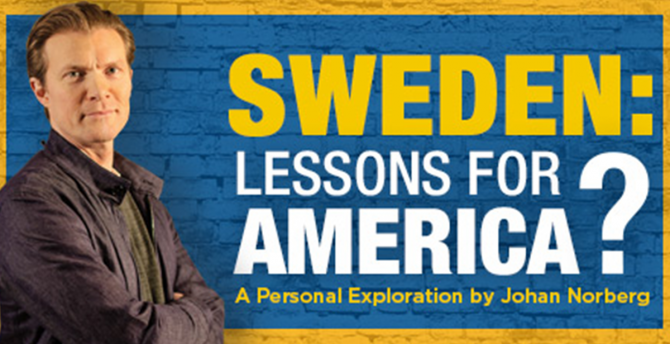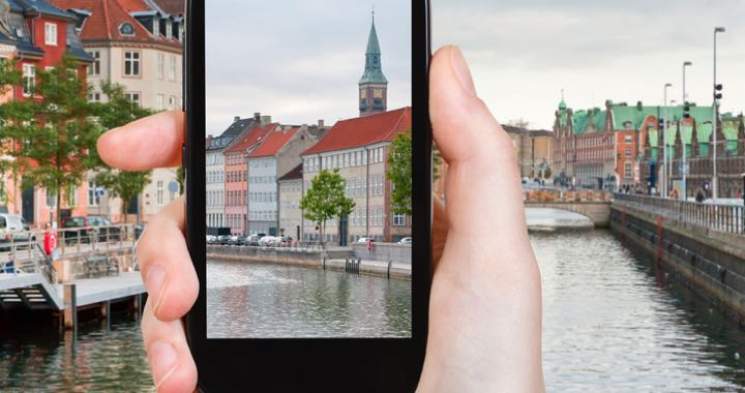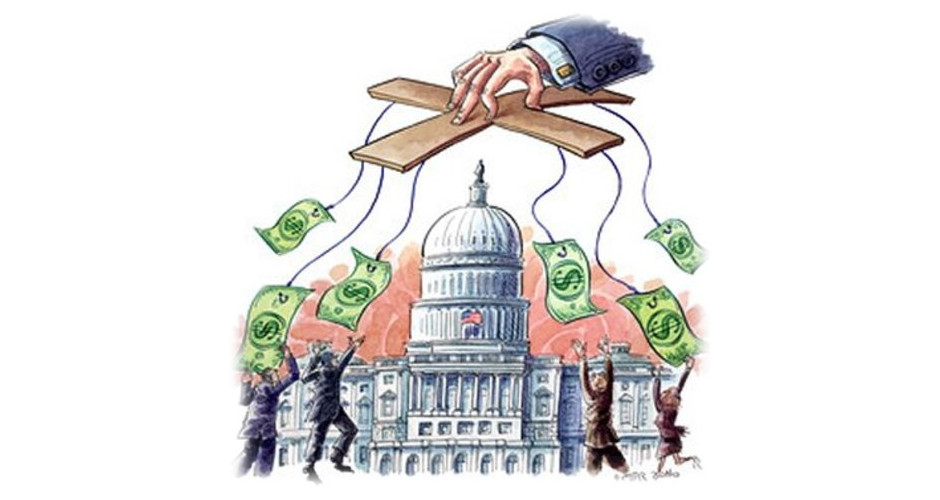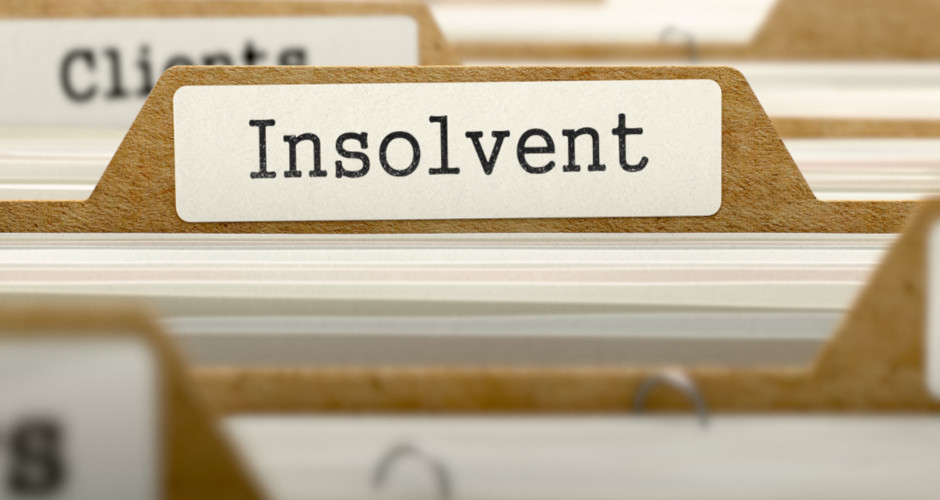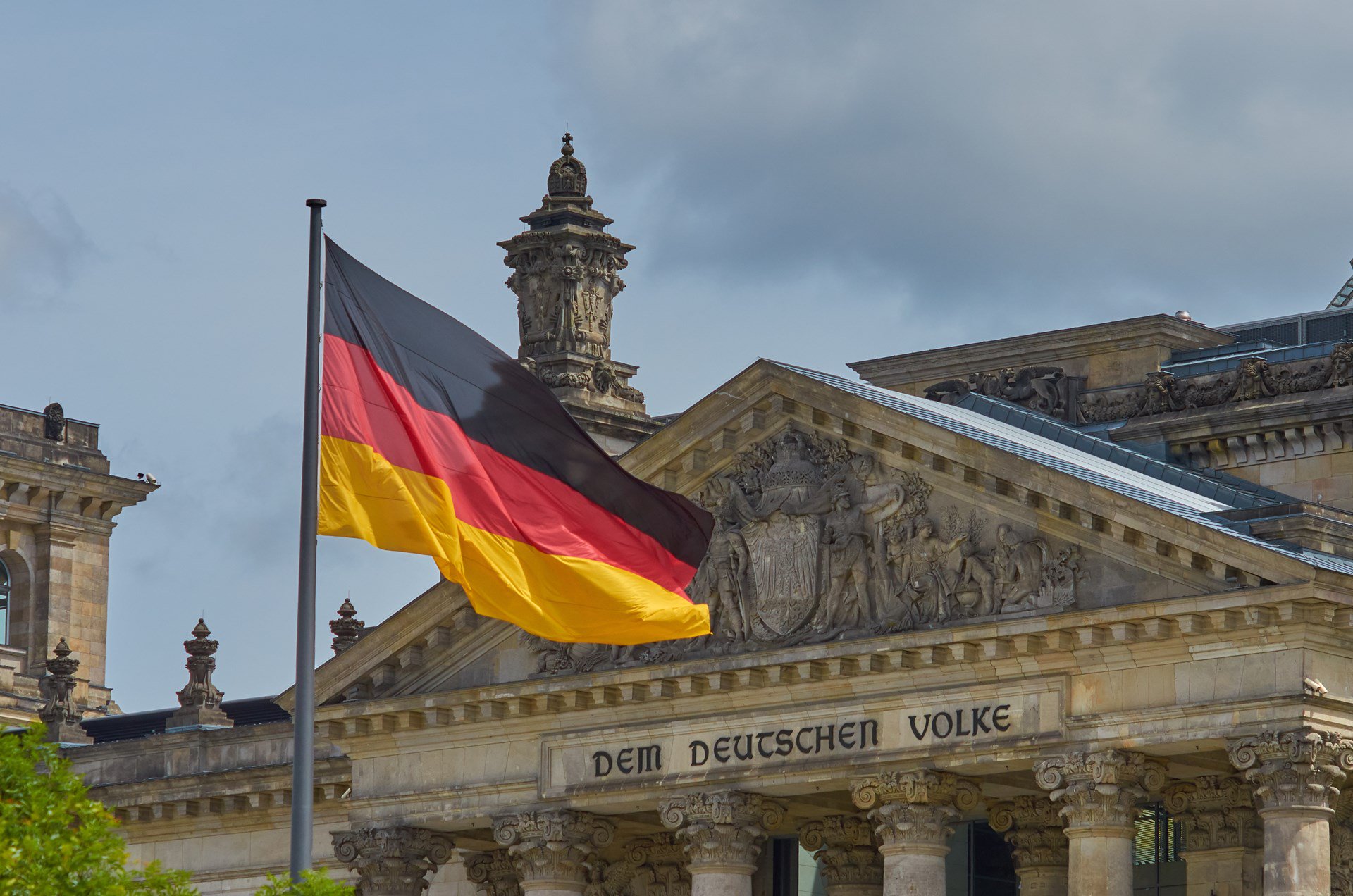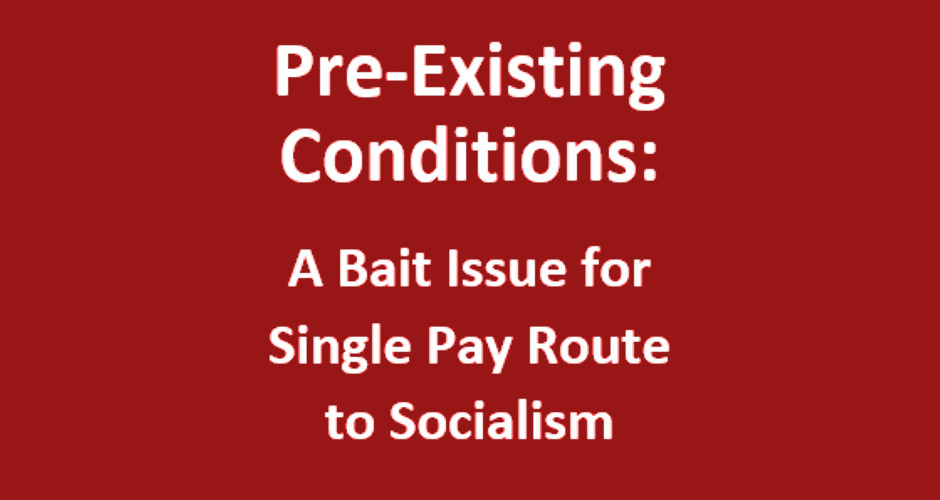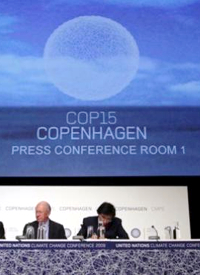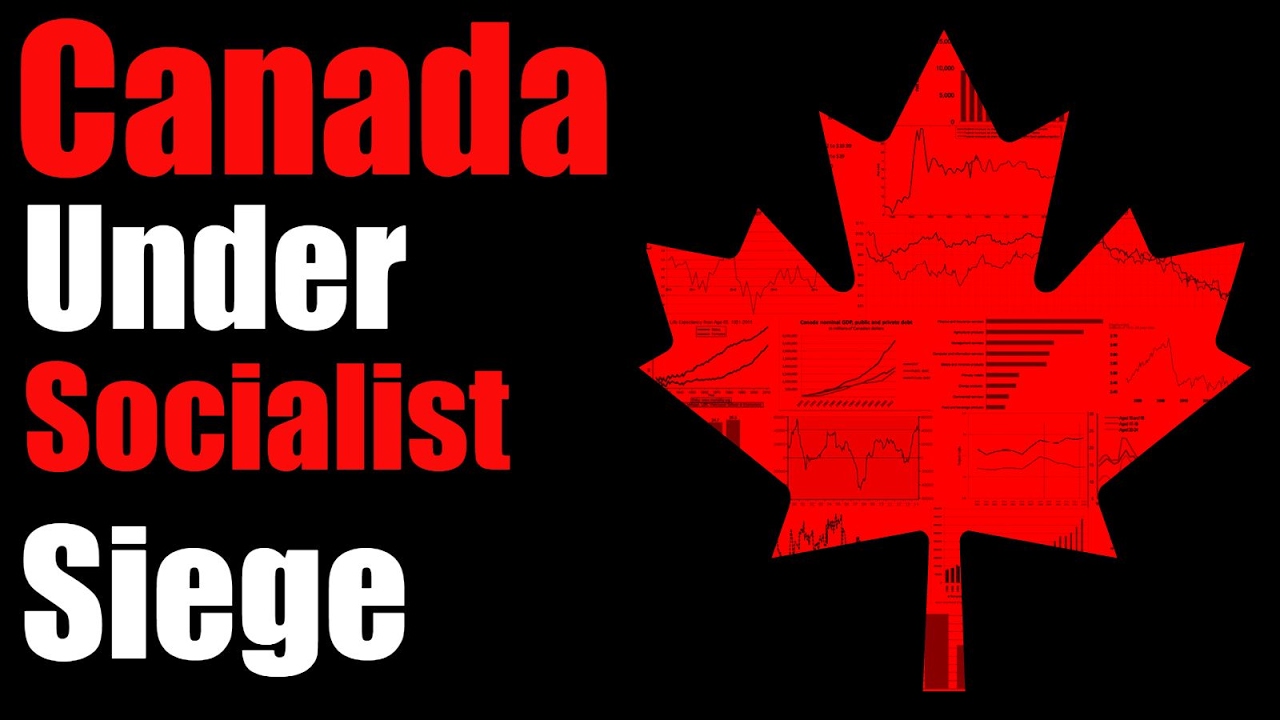From: TheNewAmerican.com ByJohn Larabell
 In America, we’ve been hearing an awful lot about the wonders of socialism and how we really ought to adopt that system in order to avoid many of the problems facing our country. Particularly with the recent popularity of outspoken socialist Senator Bernie Sanders among American millennials, Scandinavian socialism is being propped up as a way to fix our country.
In America, we’ve been hearing an awful lot about the wonders of socialism and how we really ought to adopt that system in order to avoid many of the problems facing our country. Particularly with the recent popularity of outspoken socialist Senator Bernie Sanders among American millennials, Scandinavian socialism is being propped up as a way to fix our country.
 We’re told about those countries in northern Europe that have nearly created an earthly paradise, where every societal ill is cured by a large, benevolent government. “Everything is free,” we often hear: free education, free healthcare, free childcare, free retirement, large unemployment benefits, lots of vacation time, and super-long maternity (and paternity) leave times. Add to that high wages, very low gun crime, low unemployment, and low incarceration rates. And how about low government corruption, very low national debt, and overall sound fiscal policy? Not to mention extremely progressive liberal societies that are often ranked at or near the top in global “happiness” surveys. Who could object to that? It would seem like a no-brainer to transform America into a Scandinavian-style welfare state. Or would it?
We’re told about those countries in northern Europe that have nearly created an earthly paradise, where every societal ill is cured by a large, benevolent government. “Everything is free,” we often hear: free education, free healthcare, free childcare, free retirement, large unemployment benefits, lots of vacation time, and super-long maternity (and paternity) leave times. Add to that high wages, very low gun crime, low unemployment, and low incarceration rates. And how about low government corruption, very low national debt, and overall sound fiscal policy? Not to mention extremely progressive liberal societies that are often ranked at or near the top in global “happiness” surveys. Who could object to that? It would seem like a no-brainer to transform America into a Scandinavian-style welfare state. Or would it?
How About Those Taxes?
Let’s look at Sweden for starters. For 2016, the highest level for the personal income tax in that country stands at 61 percent. That includes a municipal tax (imposed on everyone) of up to 34 percent, a church and burial tax of one or two percent, a state income tax of 20 percent on income over $52,000, and an extra five percent on income over $75,000. Way to soak the rich, right? And in case you didn’t catch it earlier, that municipal tax of between 29 and 34 percent — depending on the municipality — is imposed on everyone.
Denmark isn’t any better: For 2016, the top tax level stands at 55.8 percent (including an eight-percent “gross tax” deducted before other taxation), a combination, as with Sweden, of municipal and state-level taxes. This amount of taxation, again, is imposed at a fairly middle-class income level.
Norway stands out as the tax haven of the three countries:  Its top income tax level of 38.7 percent is actually lower than the United States’ top bracket of 39.6 percent, which, incidentally, doesn’t include state income tax. However, this level is imposed on upper-middle-class income earners (just over $100,000), not incomes in the $400,000-plus range as in the United States. In fact, the base income tax on all Norwegians is 25 percent, with higher brackets added after income levels of approximately $19,000.
Its top income tax level of 38.7 percent is actually lower than the United States’ top bracket of 39.6 percent, which, incidentally, doesn’t include state income tax. However, this level is imposed on upper-middle-class income earners (just over $100,000), not incomes in the $400,000-plus range as in the United States. In fact, the base income tax on all Norwegians is 25 percent, with higher brackets added after income levels of approximately $19,000.
While the rich do get soaked in Scandinavian countries, the middle class gets soaked even more. Even working-class people with relatively low-wage jobs get hit with tax rates that would be considered high in America. Plus, wealthy individuals, as in America, will often earn income from other sources than wages or simply incorporate to pay lower tax rates. (We’ll look at corporate taxes in a moment.) But income taxes are not what most Americans would consider the most troublesome part of taxation in Europe’s far north. That honor belongs to the Value-added Tax, or VAT.
 A VAT is, as far as the end consumer is concerned, basically a sales tax, or a tax on consumption. The difference between a VAT and our sales taxes here in the United States is that with a VAT, a good or service is taxed up the entire chain of production rather than just at the retail end. In other words, each time a business in the production chain purchases a product, a tax is added, which can be deducted from the VAT liability by the next business up the line. As with a sales tax, businesses up the production chain will get the portion of the VAT they pay refunded, with only the end consumer paying the full VAT. All OECD (Organization of Economic Co-operation and Development) countries, with the exception of the United States, impose VATs, and most are in the 15-20 percent range. But the VATs in Sweden, Denmark, and Norway are especially burdensome: All three countries boast a VAT of 25 percent for most consumer purchases. As if that weren’t bad enough, here’s the real kicker: Even food has a VAT imposed upon it. That’s right, citizens in these countries have to pay a sales tax of between 12 percent (Sweden) and the full 25 percent (Denmark) on their groceries!
A VAT is, as far as the end consumer is concerned, basically a sales tax, or a tax on consumption. The difference between a VAT and our sales taxes here in the United States is that with a VAT, a good or service is taxed up the entire chain of production rather than just at the retail end. In other words, each time a business in the production chain purchases a product, a tax is added, which can be deducted from the VAT liability by the next business up the line. As with a sales tax, businesses up the production chain will get the portion of the VAT they pay refunded, with only the end consumer paying the full VAT. All OECD (Organization of Economic Co-operation and Development) countries, with the exception of the United States, impose VATs, and most are in the 15-20 percent range. But the VATs in Sweden, Denmark, and Norway are especially burdensome: All three countries boast a VAT of 25 percent for most consumer purchases. As if that weren’t bad enough, here’s the real kicker: Even food has a VAT imposed upon it. That’s right, citizens in these countries have to pay a sales tax of between 12 percent (Sweden) and the full 25 percent (Denmark) on their groceries!
Along with the income tax, the VAT in Scandinavian countries is a main source of government revenue. Now in America, of course, we don’t have a VAT, but rather sales taxes imposed at the state level, even the highest of which is far lower than 25 percent. A VAT could truly be considered a regressive tax, meaning it affects the poor and middle class more than it does the rich, as basic necessities consume a much greater portion of a poor person’s income than they do for those of greater means. Many people of modest means in this country would likely recoil at the thought of paying any tax at all on food, let alone 25 percent.
So what’s the total tax burden for a person earning what, in America, would be a typical middle-class income? When taking into account income taxes, VAT, social security, and other taxes — such as the tax of up to 180 percent on gasoline-powered automobiles in Denmark (!) — many Scandinavians effectively give between 70 and 80 percent of their income to the government. So the moniker of “highest taxed people on Earth” is not an exaggeration.
an exaggeration.
But all those wonderful social-welfare programs in Scandinavian countries make the higher taxes on personal income worth paying, don’t they? Besides, though our taxes are lower in the states, most Americans have to pay for services out-of-pocket that Scandinavians get from the government, so it all evens out, right? Let’s take a look at two of the social services in Scandinavia that are hot-button issues in America right now — healthcare and college education — so readers can judge for themselves the merits of the Scandinavian system.
Free Healthcare!
For starters, we’ll take a look at an important aspect of the Scandinavian welfare state, one that resonates most with many Americans: healthcare. And instead of looking merely at statistics and quoting American sources, let’s see what Scandinavians have to say. We’ll start with Sweden. According to a January 27, 2015 article in the Swedish edition of The Local, an English-language European news site:
Sweden was once a health care model for the world. But that is hardly the case anymore. This is not primarily due to the fact Sweden has become worse — rather it is the case that other countries have improved faster. That Sweden no longer keeps up with those countries is largely due to its inability to reduce its patient waiting times, which are some of the worst in Europe, as the latest edition of the Euro Health Consumer Index (EHCI) revealed [on January 26, 2015].
The 2014 EHCI also confirms other big problems within Swedish healthcare.
 Sweden’s overall ranking dropped from eleventh to twelfth place — a steady decline since 2007, when Sweden was in sixth place. Sweden saw itself surpassed by all other Nordic countries, and its gap from the top is growing.
Sweden’s overall ranking dropped from eleventh to twelfth place — a steady decline since 2007, when Sweden was in sixth place. Sweden saw itself surpassed by all other Nordic countries, and its gap from the top is growing.
The author of the piece, Johan Hjertqvist, is president of Health Consumer Powerhouse, an organization that compares global healthcare systems and publishes the EHCI, and is himself a Swede. He went on to write:
It has long been tempting to excuse the Swedish move down the list on other countries improving much faster. But as the negative trend continues in Sweden, so is the growing sense of dread that serious deterioration is on the way. The seemingly chronic inability to do anything about our long waiting times affects Swedish quality of care in many other respects….
The county councils and the Swedish Association of Local Authorities and Regions’ (SKL) excuses are well known: shortage of doctors, large migration to urban areas, nurses fleeing the profession, and so on.
But in reality, Sweden has no fewer doctors and other health professionals than most other countries in the study.
There is no relationship between money supply and availability. Albania, one of Europe’s poorest countries, has no waiting time at all. And population movements and demographic changes are taking place all across Europe, not just in Sweden.
Ironically, many Swedes are purchasing private-market supplements to their “free” government-run health insurance. As noted by The Local in 2014,
More than half a million Swedes [over five percent of the population] now have private health insurance, showed a new review from industry organization Swedish Insurance (Svensk Försäkring). In eight out of ten cases, the person’s employer had offered them the private insurance deal.
“It’s quicker to get a colleague back to work if you have an operation in two weeks’ time rather than having to wait for a year,” privately insured Anna Norlander told Sveriges Radio…. “It’s terrible that I, as a young person, don’t feel I can trust the health care system to take care of me.”
Or how about this example? In a July 2013 article for the Ludwig von Mises Institute, native Swede Klaus Bernpainter recalled:
For non-emergency cases in Sweden, you must go to the public “Healthcare Central.” This is always the starting point for anything from the common flu to brain tumors. You must go to your assigned Central, according to your healthcare district. Admission is by appointment only. Usually they have a 30-minute window every morning, when you call to claim one of the budgeted slots. Make sure to call early or they run out. Rarely will you get an appointment for the same day. You will be assigned a general practitioner, probably one you have never met before; likely one who does not speak fluent Swedish; and very likely one who hates his job. If you have a serious condition, you will be started on a path of referrals to experts. This process can take months….
This healthcare “bread line” is where people die. It happens regularly that by the time a patient gets to see an expert, his condition has progressed beyond remedy. It also happens frequently that referrals get lost….
 The emergency room is a different experience altogether. Unless you are suffocating or are hemorrhaging profusely, you should expect to wait 5-7 hours to see a doctor. You can only hope for this “high” level of service if you arrive on a workday and during office hours. After hours, or on weekends, it is worse. Doctors are mostly busy filling out forms for the central health care authorities, scribbling codes in little boxes to report services rendered, instead of seeing patients. There have been cases reported where patients have seen a doctor immediately, but such cases are rare.
The emergency room is a different experience altogether. Unless you are suffocating or are hemorrhaging profusely, you should expect to wait 5-7 hours to see a doctor. You can only hope for this “high” level of service if you arrive on a workday and during office hours. After hours, or on weekends, it is worse. Doctors are mostly busy filling out forms for the central health care authorities, scribbling codes in little boxes to report services rendered, instead of seeing patients. There have been cases reported where patients have seen a doctor immediately, but such cases are rare.
It is important to plan any major health problems you intend to have outside of June, July, and August, because [in] the summer months, hospitals are virtually shut down for vacation.
So that’s what Swedes have to say about their own healthcare system. Health Consumer Powerhouse’s 2015 EHCI survey revealed similar problems about Norway’s healthcare. While it is generally considered very good, owing to massive amounts of money being pumped into the system (more on that later), waiting times are still an issue. Denmark, while ranking lower than Norway but higher than Sweden in the EHCI survey, faces similar issues with healthcare accessibility. The survey remarked on the “tightening of access to healthcare, with only two telephone numbers being available to Danish patients; the number of their [general practitioner], or the emergency number 112!” And as with Sweden, a surprising number of Danes (nearly a quarter of the population) supplement their healthcare with private insurance.
So having government-run, “free” healthcare does not necessarily mean “good” healthcare. As far as the infrastructure, facilities, and technology are concerned, Scandinavian countries have just as good a healthcare system as other developed countries. But as is a common phenomenon any place there is a centralized bureaucracy running healthcare in a country, the people experience lack of accessibility, lack of consumer choice, rationing of services, and notoriously long wait times. The Swedish government, for its part, poured nearly $1.5 billion into the country’s healthcare system in recent years in an attempt to lower waiting times. It helped, but only very slightly. The problem with the Scandinavian healthcare system appears to be too much government involvement, not too little.
“But everyone gets covered” is the refrain we usually hear from progressives in this country when addressing criticism of Scandinavia’s healthcare system. Yes, that’s true, but as we’ve seen above, the coverage is not all that great. What’s more, a growing number of citizens are supplementing their “free” tax-funded insurance with private insurance. Further, it’s not as if poor people in America are dying in heaps in the streets because they don’t have health insurance and no one will take care of them; people get taken care of. Emergency rooms don’t turn people away, and between Medicare, Medicaid, Veterans Affairs clinics, and various state welfare services, it’s extremely rare for people in this country to go completely without care (though admittedly this care is not always the best). This is, of course, to say nothing of the unconstitutionality or lack of efficacy of any government involvement in healthcare to begin with, and the fact that healthcare should be completely left up to the private sector and the free market, as we’ve written about numerous times in this magazine. A truly p [Grab your reader’s attention with a great quote from the document or use this space to emphasize a key point. To place this text box anywhere on the page, just drag it.]
Privatized, free market in healthcare would lead to lower prices as a result of competition and the necessity to maintain affordability for the patient in the absence of government subsidies. Getting rid of the government as a “middle man” would also drastically lower costs for doctors, as the need for extra staff to handle all of the coding and billing would largely disappear. Doctors would be free to negotiate prices and payment plans for those suffering financial difficulty, and “free clinics” and charitable organizations would ensure that even the poorest person could get care when needed. Though such practices exist today in America, they were once commonplace, and would see a renaissance if the government would follow the Constitution and get out of healthcare, period. A government-run system, while it sounds attractive for several reasons, often leads to worse care, not better, and is generally unsustainable in the long run.
Free College Education!
Scandinavian countries are also known for the much-celebrated “free” college education for all, and this was one of Senator Bernie Sanders’ main policy talking points during his bid for the Democratic presidential nomination. We have to pay for college out of our own pockets (or take out loans and be saddled with student-loan debt for years) here in America, which, as the argument goes, prevents many people from enjoying the benefits of higher education.
 Education in Scandinavian countries is generally seen as a civil right; therefore, it’s seen as something that should be paid for collectively rather than by any one individual. Part of the reasoning is that an educated populace benefits all of society, so people should not be left out of the opportunity to have an education because they can’t afford it. Consequently, higher education is almost entirely publicly funded, ranging from 90 percent in Sweden, to 95 percent in Denmark, to 96 percent in Norway, compared to just under 35 percent in the United States. Norway takes things a step further, even allowing foreign students to study tuition-free. This is regarded as a social good that benefits the rest of the world, and there’s the fear that charging foreign students would lower the global competitiveness of the universities in Norway and cause a drop in enrollment. Case in point: Denmark and Sweden implemented tuition fees for international students coming from outside the EU in 2006 and 2011, respectively, and they did see a large decline in international students.
Education in Scandinavian countries is generally seen as a civil right; therefore, it’s seen as something that should be paid for collectively rather than by any one individual. Part of the reasoning is that an educated populace benefits all of society, so people should not be left out of the opportunity to have an education because they can’t afford it. Consequently, higher education is almost entirely publicly funded, ranging from 90 percent in Sweden, to 95 percent in Denmark, to 96 percent in Norway, compared to just under 35 percent in the United States. Norway takes things a step further, even allowing foreign students to study tuition-free. This is regarded as a social good that benefits the rest of the world, and there’s the fear that charging foreign students would lower the global competitiveness of the universities in Norway and cause a drop in enrollment. Case in point: Denmark and Sweden implemented tuition fees for international students coming from outside the EU in 2006 and 2011, respectively, and they did see a large decline in international students.
Colleges and universities in Scandinavia are generally considered to offer a world-class education, scoring very high in global rankings for research and innovation. So could government-funded higher education be one area where the Scandinavians have us beat? It certainly sounds like they offer their citizens (and in the case of Norway, non-citizens) a great deal. And it is a great deal — for now. Such a system is immensely expensive to sustain, as evidenced by Denmark and Sweden nixing free tuition for foreign students. Many students, understandably so, are worried that the next step might be to shift a bit of the tuition burden onto native students, as well. Norway is able to continue offering free tuition for foreign students for the time being, thanks to one very important factor that we’ll explore later. At any rate, someone has to pay for this, as nothing is truly “free.” And that someone, to the disappointment of many Bernie Sanders supporters, is not the obscure rich guy living on his estate on the other side of the country; it’s middle-class and working-class people, the very ones hoping to get a “free ride.”
Here’s some more food for thought: If everyone gets a college education, such an education essentially becomes worthless, no better than a high-school diploma is now. Plus, under a tax-funded system, those who choose not to go to college, for any number of reasons, would still be paying for it, much the same way parents who put their kids in private schools in America still pay for the public schools via property taxes. And this raises another important point: Even with “free” college education, a surprisingly low number of Scandinavians actually end up going to college. According to an analysis by Elisabeth Hovdhaugen, a Norwegian education researcher, “only 14 percent of children from the least-educated families in Norway go to college, compared to 58 percent of children from the most-educated families.” This is about the same as in the United States. So the problem isn’t just money, it’s about familial and cultural values. Also, since many blue-collar jobs pay quite well in Scandinavian countries, and the welfare state is almost paternal in its scope, there’s not as much incentive to actually go to college and pursue a degree.
How the Bumblebee Flies
We in America often hear about the brilliance of government planners in Scandinavian countries, and how they are able to somehow, miraculously, maintain a high-tax welfare state with lots of benefits while maintaining robust economies with low unemployment. It’s often known as “third way” socialism, a sort of “middle ground” that, according to its proponents, avoids the harsh excesses of free-market capitalism and Soviet Union-style communism.
 Those countries have been likened to the bumblebee, since, according to the laws of physics, the fuzzy, nectar-and-pollen-loving insect should not be able to fly, but it somehow manages quite well. Likewise, Scandinavian countries have somehow managed to “figure it out,” prompting suggestions by liberals in America that we could learn a great deal from them.
Those countries have been likened to the bumblebee, since, according to the laws of physics, the fuzzy, nectar-and-pollen-loving insect should not be able to fly, but it somehow manages quite well. Likewise, Scandinavian countries have somehow managed to “figure it out,” prompting suggestions by liberals in America that we could learn a great deal from them.
So how does the bumblebee fly? In order to understand the “economic miracle” of the Scandinavian welfare states, a brief look back into history is in order.
In the late 19th century, Denmark already had a fairly successful economy, with strong property rights and a liberal market that enabled small and large businesses, primarily agricultural, to prosper. Sweden and Norway were still relatively poor, backward nations during much of this time, which led to large waves of immigration to the United States. After 1870 or so, Sweden experienced an economic boom as a capitalist system evolved out of the former agrarian economy; strong property rights, free markets, rule of law, and an educated, entrepreneurial citizenry made this possible. With the onset of industrialization in Scandinavia at the dawn of the 20th century, Sweden in particular saw phenomenal growth: Many of the well-known Swedish companies such as IKEA, Volvo, Tetra Pak, and Ericsson were founded from the end of the 19th century through the first half of the 20th century.
In Denmark in the 1920s and in Sweden in the 1930s, basic tax-funded social welfare programs, similar to those in many other developed countries, began to be implemented. This did little to slow down their fantastic economic growth, and Sweden in particular was, per capita, one of the wealthiest countries in the world. Things began to change in the ’60s and ’70s. While America was dealing with the Vietnam War and various counterculture movements, Scandinavian countries were implementing their trademark socialist systems with high taxes, massive public spending, and cradle-to-grave welfare programs. Tax revenues went from a not-too-uncommon 25 to 30 percent of GDP in the mid ’50s to well over 40 percent of GDP by the end of the 20th century. In Denmark’s case, the early 2000s saw tax revenue levels at a sky-high 50 percent of GDP.
So what did this do to the economies of the Scandinavian countries? Though apologists for the “Nordic miracle” would have us believe that it had no negative effect, they’re wrong. After 1970, economic growth for Scandinavian countries, especially Denmark and Sweden (more about Norway later), began to slow down dramatically, appearing to almost stagnate compared to what it had been previously. By the 1980s, problems were already apparent. The high taxes were stifling business creation. As foreign-born Swedish researcher Nima Sanandaji noted in Scandinavian Unexceptionalism: Culture, Markets and the Failure of Third-way Socialism,
In 2004, 38 of the 100 businesses with the highest revenue in Sweden were entrepreneurial: in other words started as privately owned businesses within the country. Of these firms, 21 were founded before 1913. Additionally, 15 were founded between 1914 and 1970. Only two had been formed after 1970. If the 100 largest firms are instead ranked according to how many people they employed, none of the largest entrepreneurial firms were founded after 1970.
Indeed, Denmark in 1970 was ranked seventh among the top 20 OECD countries as measured in GDP per capita. By 1980, it had already dropped to 10th place. Worse yet, Sweden went from fourth place (right under the United States) in 1970 down to 11th place in 2000.
 But the bumblebee still managed to fly, because it realized it was sinking and began to change course. During recent decades, the Scandinavian countries have implemented a number of market reforms and liberalizations, not the least of which was drastically lowering corporate taxes. During the 1980s, Denmark, Norway, and Sweden had corporate tax rates as high as 50 percent, 50.8 percent, and 60.1 percent, respectively. They currently stand at 23.5 percent, 27 percent, and 22 percent, respectively. All three of these are lower than the top corporate tax rate in the United States of 35 percent (not including state taxes). Lower corporate taxes, combined with other reforms such as increasing privatization of some services — such as transportation, emergency services, and some utilities — and increased labor flexibility (particularly in Denmark), arrested the economic decline in Denmark and Sweden, even leading to slight improvement so far in the 2000s. Also, strong private property rights and low property taxes are a feature of Scandinavian countries, something anathema to Marxists of the hard-core Left.
But the bumblebee still managed to fly, because it realized it was sinking and began to change course. During recent decades, the Scandinavian countries have implemented a number of market reforms and liberalizations, not the least of which was drastically lowering corporate taxes. During the 1980s, Denmark, Norway, and Sweden had corporate tax rates as high as 50 percent, 50.8 percent, and 60.1 percent, respectively. They currently stand at 23.5 percent, 27 percent, and 22 percent, respectively. All three of these are lower than the top corporate tax rate in the United States of 35 percent (not including state taxes). Lower corporate taxes, combined with other reforms such as increasing privatization of some services — such as transportation, emergency services, and some utilities — and increased labor flexibility (particularly in Denmark), arrested the economic decline in Denmark and Sweden, even leading to slight improvement so far in the 2000s. Also, strong private property rights and low property taxes are a feature of Scandinavian countries, something anathema to Marxists of the hard-core Left.
Norway has been a different creature altogether. The fairly insular, protectionist nation had remained mostly rural and did not see the economic boom that Denmark and Sweden experienced in the early 20th century. In 1970, Norway was ranked 18th among the top 20 nations in GDP per capita. By 1980 it had risen to 13th place, and by 2000 it was in second place, where it stands today. What happened? One word: oil. Lots of oil. Norway discovered oil and gas in its territorial waters of the North Sea in the late 1960s, and it’s been “drill baby, drill” ever since. In The Almost Nearly Perfect People: the Truth About the Nordic Miracle (alternately The Almost Nearly Perfect People: Behind the Myth of the Scandinavian Utopia), award-winning British author Michael Booth humorously (but not too inaccurately) likened the Norwegians to the Beverly Hillbillies of 1960s TV fame. This country of just over five million people is the top oil producer in Europe (by a large margin), and currently the 15th largest oil producer in the world. The petroleum industry in Norway is largely government-owned, and private companies in the oil sector face a corporate tax of 66 percent. Norway is essentially using its oil and gas exports to fund a gigantic piggy bank in order to pay for one of the world’s costliest welfare states. Despite having low corporate taxes and the lowest income tax of the Scandinavian countries, Norway, unlike Denmark and Sweden, did not implement many of the market reforms of the late 20th and early 21st centuries. The Norwegian government is a majority stakeholder in many of the country’s publicly traded companies, and the labor market is still very protectionist. But for now, Norway can afford it.
From an economic standpoint, Scandinavia’s experiment with socialism is a relatively new phenomenon, really more of an aberration that lasted for a couple decades, and it is already seeing changes back to a more free-market system. Denmark and Sweden are more business-friendly than the United States, for example, and are deregulating other parts of their economies. So that’s how the bumblebee flies. Sorry American progressives and starry-eyed millennials in love with all things Scandinavian: Those countries actually tax the little guy more than they tax Big Business. And Norway’s utopia is funded by Big Oil.
Not So Successful
So how do Scandinavian countries make it work? In short, by being business-friendly and heavily taxing the middle class. Or using oil money. And to be totally accurate, the Scandinavian model hasn’t even “worked” all that well to begin with, since tax cuts and reforms to the welfare state are already being implemented, with more in the future being a real possibility. Imagine the economic success and prosperity of the three nations had the welfare state never been  implemented. If the early 20th century serves as any indication, they likely could have been the wealthiest nations on Earth per capita; one can only speculate.
implemented. If the early 20th century serves as any indication, they likely could have been the wealthiest nations on Earth per capita; one can only speculate.
So Scandinavia is not really the smashing success story for socialism that many American progressives make it out to be. Furthermore, there’s one huge element of Scandinavian society that goes hand-in-hand with the socialist welfare state and has enabled it to work to the moderate extent that it has: culture. Without some very specific cultural traits that lend themselves to a social-welfare state, Norway, Denmark, and Sweden would have had much less success than they have had so far. We explore this in greater detail in our article here.











